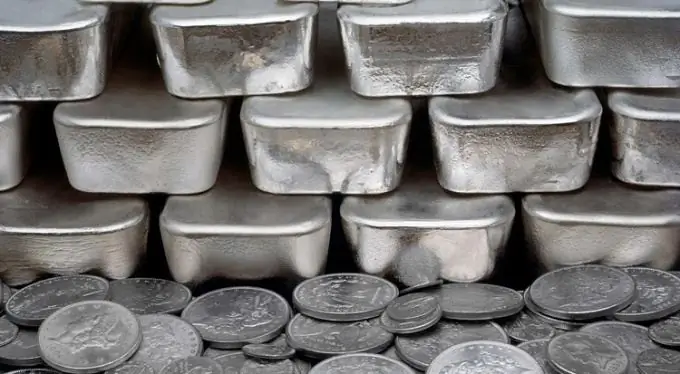Among the consumers of the market, silver is classified as a precious metal intended solely for the creation of jewelry. However, it can also be used for technical purposes.

Physical and chemical properties of natural silver
Silver is perhaps the most common and most beloved metal. It has a variety of useful properties, both chemical and physical. Silver belongs to the group of noble metals. Chemically, this element is quite inert and does not react with aggressive reagents, except for strong acids.
The indicators of thermal and electrical conductivity of silver are also high, which is widely used in industry. One of the important indicators of the qualities of this metal in the field of optics is its highest reflectivity, which led, at one time, to the appearance of mirrors. In the Middle Ages, a thin layer of silver was applied to glass, thereby providing a clear, undistorted image of the reflected object.
Application of silver
Silver has long been used by man for the manufacture of jewelry and various kinds of kitchen utensils, where another indisputable advantage over other metals is used - its bactericidal action.
Various alloys are made from silver, depending on where silver is to be used. The addition of ligatures such as copper, tin, zinc, cadmium and gold gives silver a different color and slightly changes its physical and chemical properties. Pure silver is practically not used in jewelry because of its increased ductility and low mechanical strength. Ligating components are called upon to change the melting point, reduce its ability to abrasion, increase strength, without changing the color. Jewelry silver is created using similar processes.
The industry uses the natural properties of pure silver. Technical silver must represent all the physical properties that allow it to be used in the radio and electrical industries, the main of which is its unique electrical conductivity.
Technical silver - applications
The term "technical silver" is not entirely correct, as it hints at the imperfect purity of the metal. However, unlike industrial diamonds, which are essentially highly defective, industrial silver, on the contrary, is very pure - 99.9%. The remaining 0.1% is accounted for by impurities, and the composition of this ligature is strictly defined.
Wires and contacts are coated with technical silver, contact groups and individual elements of electrical structures are cast from it. In its pure form, technical silver is also present in radio components of devices manufactured in the Soviet Union. Until the 90s of the last century, pure technical silver was used for the manufacture of photographic materials.
When it is necessary to improve some mechanical properties (for example, the impact strength in the contacts of large starters), cadmium is added to the alloy. The result obtained does not significantly affect the electrical conductivity.
The so-called secondary technical silver is obtained from technical silver-containing alloys. The processing of silver-containing scrap is of both economic importance and solves issues related to the disposal of hazardous impurities during the processing of contact silver-containing masses coming from chemical enterprises.







